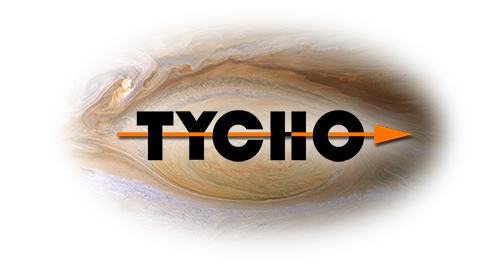

TYCHO is freely available to everyone. You are welcome to download it and do whatever you want with it.
The Tar-Ball contains all the sources and some Parameterfiles with corresponding initial conditions. Important notice: If you have old parameterfiles (version 0.93 an lower), you have to change them due to TYCHO's new parameterfile-format. Have a look into the manual and into the parameterfile directory to see what has changed. Version V1.2.1 is improved regarding speed and intitial/boundary/windemitter and marker files. You have to choose tychoBCGEN V0.4 to generate the new files or change you existing files, by including an 200 bytes offset at the beginning (for metadata in you files) and a row-major order of the data. As the code is written completely in C you need a C Compiler (e.g. the http://gcc.gnu.org/GNU C Compiler). If you wish to deploy a parallel execution of your simulation you should compile the Code with Open-MP functionality (e.g. http://gcc.gnu.org/projects/gomp/GOMP. The package comes with the common
procedure. Just copy the TYCHO executable in a working directory of your choice. To give flags to the compiler you can set them via arguments to the configure script. ./configure CFLAGS="-O3" LIBS="-lm" for a serial version or ./configure CFLAGS="-O3 -fopenmp" LIBS="-lm -lgomp" for a OpenMP parallelized version.) The code needs a parameter-file at start up given as an argument (e.g. ./tycho parameterfile.txt). The file includes all important parameters such as
A detailed description of all implemented functionality can be found in the documentation section. You will find several starting parameter-files in the paramterfile directory. Please see the docu for more information. To provide the user with a simple starting point for one's own simulations,
two OCTAVE scripts are provided to set up 2D initial conditions for TYCHO. http://www.gnu.org/software/octave/ If you want to generate boundary condition from pixel images tychoBCGEN should be your choice. By selecting pixels in the same color-range and exporting these marked regions as solid boundaries you can basically create complox simulations. |